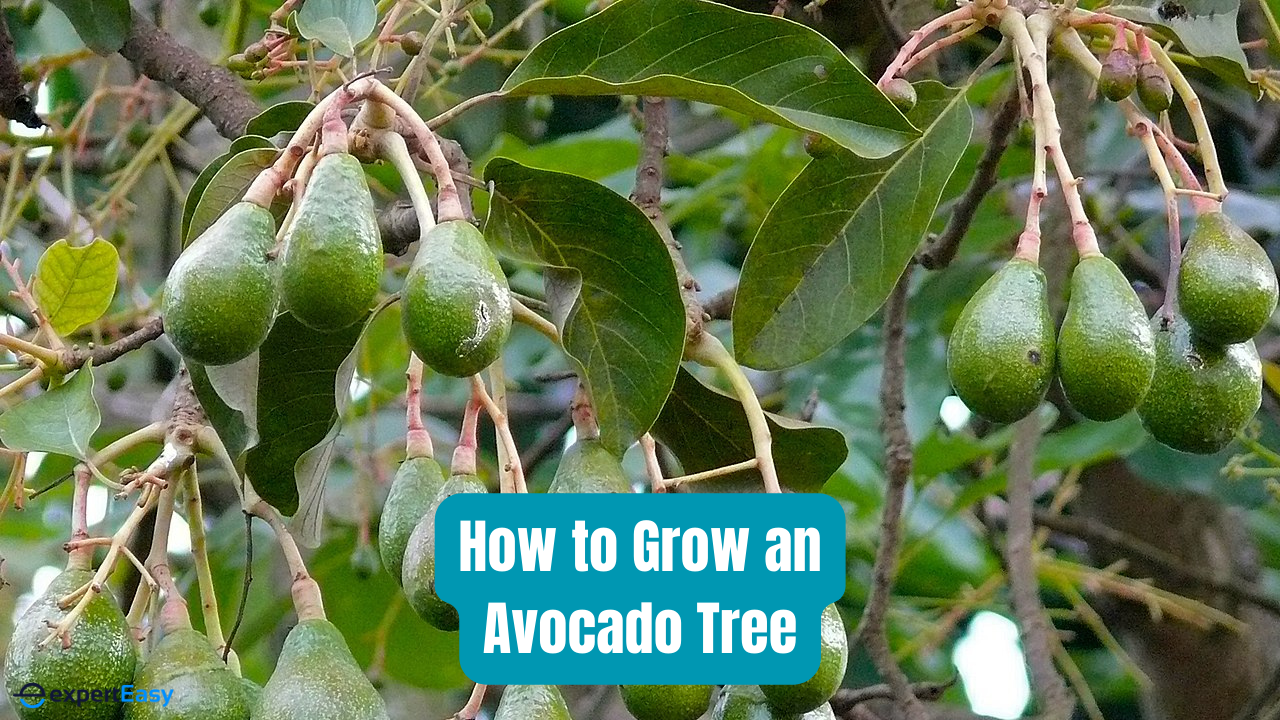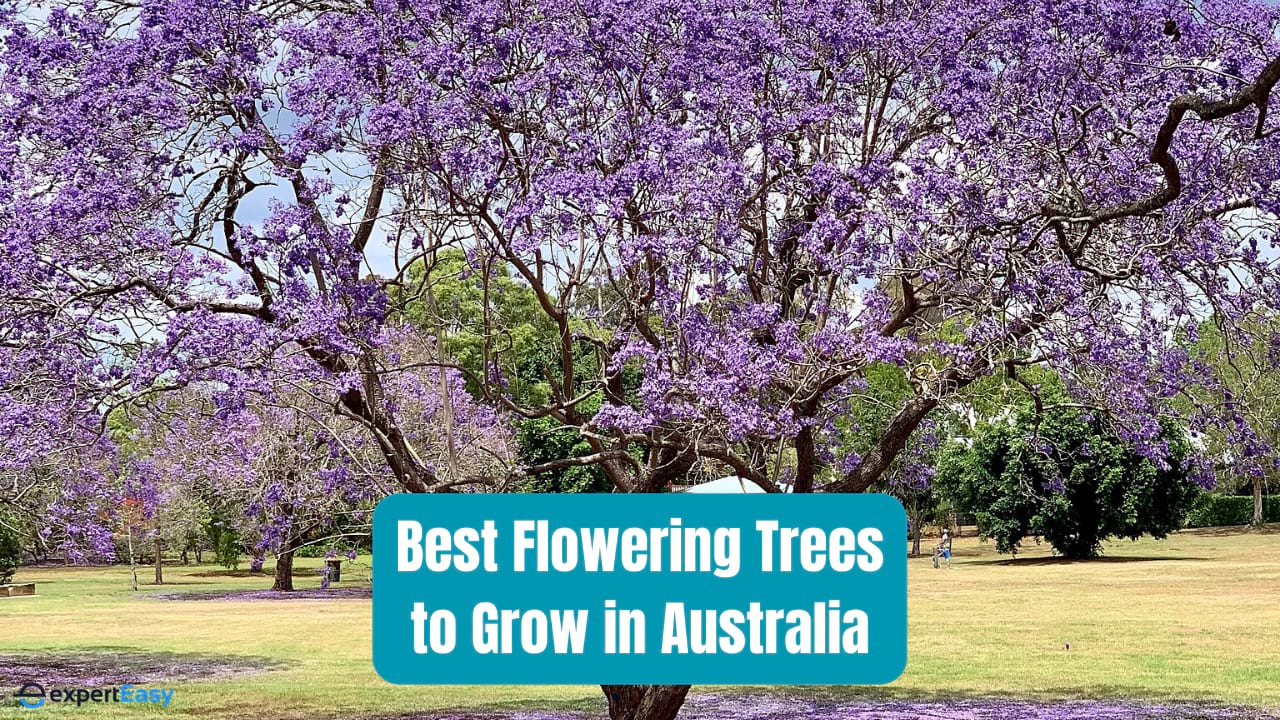Avocado, a tropical gem originating from Central and South America, is cherished for its uniquely creamy taste and abundance of health-boosting properties. The fruit is packed with essential vitamins like A, B6, and E and abundant in healthful oils rich in phytochemicals and antioxidants, earning the title of a superfood.
From enhancing heart health to aiding eye health and even reducing cancer risks, avocado offers it all. But can we, Australians, cultivate the plant in our backyards? The answer is yes! In this blog, I’ll guide you on a journey to grow and harvest an avocado tree successfully.
Avocado Plant & Varieties
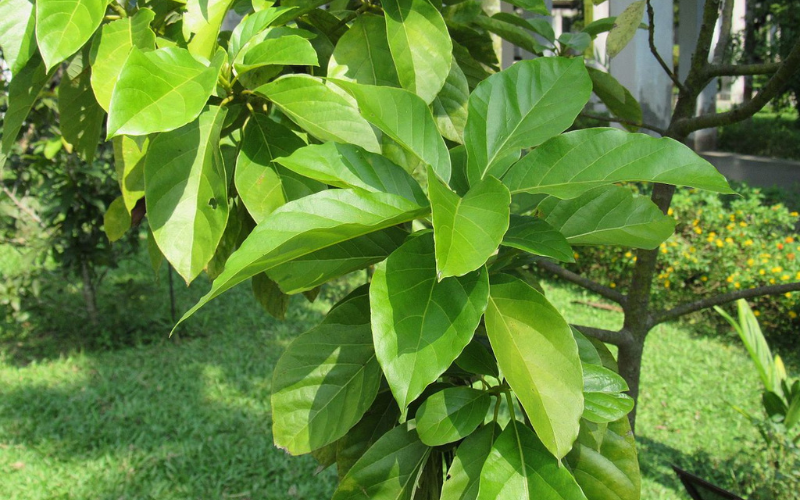
Avocado plants (Persea americana) are medium to large-sized evergreen trees primarily grown for their delicious and nutritious fruit, the avocado. They have broad, leathery, dark green leaves that are arranged alternately on the branches. The avocado fruit is oval-shaped and varies in size, usually between 7 to 20 cm in length. The fruit's skin also ranges from green to purple-black, depending on the variety.
Avocado trees thrive in warm, subtropical to tropical climates. They require well-draining soil and are sensitive to freezing temperatures. Most avocado varieties are self-pollinating, but having multiple trees can increase fruit production. It takes around 4 to 6 years for an avocado tree to bear fruit after planting, although some varieties may take longer.
The avocado fruit is packed with healthy monounsaturated fats, vitamins (such as C, E, K, and some B vitamins), minerals (like potassium and magnesium), and dietary fiber. They are considered beneficial for heart health and overall well-being and are commonly used in various dishes. They are a key ingredient in guacamole, salads, sandwiches, smoothies, etc. The plant is susceptible to pests (e.g., thrips, mites) and diseases (e.g., root rot, anthracnose).
There are many avocado varieties grown worldwide. And while Hass is most commonly known by Aussies, here are other varieties to consider:
Hass Avocado
The Hass variety is the most popular of all avocados in Australia. It’s produced all year round in a wide range of climates that support avocado growth. It has bumpy, dark skin and darkens to a purplish-black colour as it ripens. A Hass avocado tree can grow to heights of 3 to 4.5 metres.
Fuerte Avocado
Another popular variety is the Fuerte avocado, which has a much different skin from that of the Hass. It is lighter green and much smoother. It usually stays green rather than darkening as it ripens. This variety grows to heights of 7 to 10 metres and is harvested in late fall through early spring.
Wurtz Avocado
The Wurtz variety produces a smaller tree that yields medium size, pear-shaped, dark green fruits. This semi-dwarf tree is prostrate and densely foliaged and can grow to heights of up to 4 metres. In addition to its low vigour and weeping habit, Wurtz avocado trees can be difficult to train.
Why Aussies Should Grow Avocado Trees?
Avocado trees are easy to grow in Australia. However, the ease of cultivation and their success depend on the region and its climate. To cultivate, you have two options; whether you grow an avocado plant from a nursery-grown tree or seed.
Either way, patience is key to success. It can take up to 13 years for the plant to yield fruits if you grow from seed and up to 4 years for a nursery-grown tree. Regardless of the enormous patience required for success, the benefits of growing avocado trees are many:
- To begin with, avocados are nutritional powerhouses. Just a single fruit can tick off a good chunk of your daily nutritional needs. That's a tasty and convenient way to keep yourself in top shape.
- If you've ever winced at the price tag of a ripe avocado at the supermarket, you're not alone. Having your own stash of homegrown avocados can help keep your grocery bills in check.
- Avocados are also known for their longevity. Unlike some fruits, avocados can be stored for longer periods. So, no worries about overproduction. You'll always have a ready supply of the fruit.
- By growing your own avocados, you do your bit to reduce your carbon footprint. That's a win-win for you and Mother Nature.
- And let's not forget, an avocado tree is a sight to behold. With its dense green foliage, it's a natural beauty that can spruce up any garden.
Ideal Growing Conditions for the Avocado Plant
If you are determined to have an avocado tree or two in your backyard, you will be pleased to know that the trees are quite easy to grow and maintain when the conditions are right.
Climate Requirements
The plant normally thrives in tropical and subtropical regions of the country. This includes Western Australia, New South Wales, and some parts of Queensland, which are zones 1 to 3. Also, it is possible to grow the plant in zones 4 to 6 that are frost-free.
Light Requirements
Avocado is a tropical plant that requires lots of sunlight to thrive. So, choose a location that gets enough sunlight, at least eight hours a day. The plant can still grow in partial shade. Also, be careful not to burn juvenile trees during the hot summer months. And protect them from strong winds.
Soil Conditions
Avocado trees grow best in well-drained soil because wet soil may lead to root rot. So, it is important to avoid heavy or water-logged soils. The ideal texture for avocados is loamy or sandy loamy soils, which provide an optimal balance between water retention and drainage.
Similarly, the soil should be rich in organic matter to ensure superior moisture-holding capacity, structure, and fertility. You can improve soil quality with mulch, manure, or compost. Soil pH may range from 5 to 7; you can adjust the pH according to the avocado cultivator by using lime or dolomite.
How to Grow an Avocado Tree
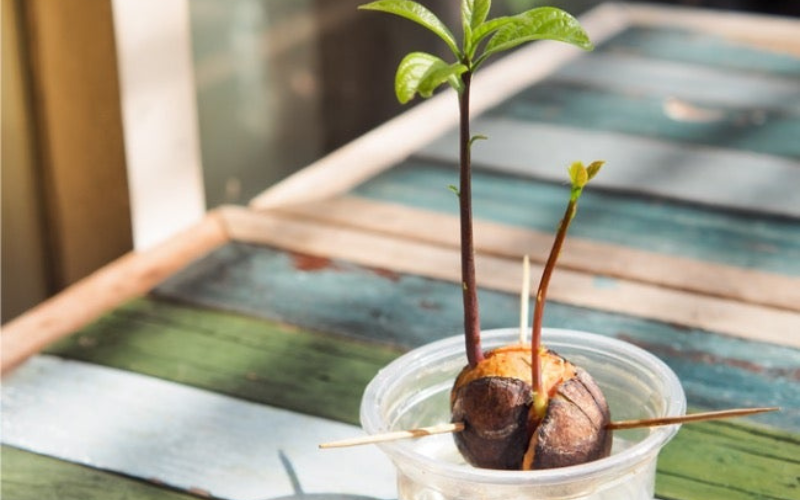
Now that your soil's ready, it's time to start growing your avocado tree. There are two methods you can follow: starting from seed or grafting. Let’s explore both methods:
From Seed to Tree
Growing avocados from seed is simple. You need a glass or sturdy plastic cup, three to four toothpicks, water (room temperature), and the following step-by-step guidelines:
- Split a ripe avocado, separate the flesh from the seed, and use a paper towel to clean off any remaining flesh.
- Find the top and bottom of your avocado seed. The top is usually narrow, whereas the bottom is a bit broader. The bottom may have a rough light patch where the roots will emerge.
- Peel and remove the brown skin from the seed with anything sharp to prevent the seed from moulding as it germinates.
- Stick three or four toothpicks into the seed at mid-level. They will hold the seed at a steady spot in the glass or jar opening. The configuration may differ depending on the design of your jar or glass. Avoid putting the toothpicks into the crack (where the seed splits when it sprouts) that runs along the entire seed.
- Place the seed with attached toothpicks into the glass or jar opening and make sure it sits in a steady spot. Then add water until it is mid-level of the seed. Change the water every 3 days to keep away disease-causing insects.
- After a week or two, you should notice a single or multiple roots sprouting. Wait for the young stem to grow to heights of 15 cm. Then transfer it to a potting mix in a clay pot with sufficient drainage holes.
- Water the plant frequently and position it in an area that receives direct sunlight. Avoid overwatering the plant. Instead, allow it to dry out in between watering sessions.
- Transfer your avocado plant to your garden once it is established.
Grafting Avocado Trees
Grafting is not the simplest of gardening practices. For the novice avocado grower, it may prove a bit challenging as it requires precision, timing, and botanical knowledge. If you're undeterred, here's a brief overview of what it involves:
- Selection of Scion and Rootstock: The first step in grafting is choosing the right scion—the part of the plant that bears the fruit—and the rootstock, which provides the root system. The scion should be from a healthy, productive avocado tree, while the rootstock should come from a hardy, disease-resistant tree.
- Joining the Scion and Rootstock: This is the trickiest part. You need to make precise cuts in the rootstock and scion so they fit together perfectly, ensuring that their vascular tissues align for proper nutrient flow.
- Securing the Graft: Once the scion and rootstock are joined, it's crucial to secure them tightly using grafting tape. This keeps the two parts in close contact, allowing them to grow together.
- Post-Graft Care: Finally, your newly grafted plant needs special care. It should be kept in a humid environment and watered regularly to ensure it recovers from the grafting process.
While grafting involves a learning curve, it offers a remarkable way to fast-track your journey to fresh, home-grown avocados. The key is practice, patience, and a good deal of botanical curiosity.
Essentially, it's a botanical ballet that pairs two distinct plants into one. This intricate process allows you to combine the hardiness and adaptability of a mature plant's root system with the fruit-bearing potential of a young, productive plant.
Why Isn't My Avocado Seed Growing?
Several factors could prevent your avocado seed from growing. Here are five common reasons they may not be sprouting:
- Immature or Unviable Seed: The seed might not be fully mature or could be damaged, lacking the necessary nutrients and genetic material to sprout.
- Watering Issues: Inconsistent watering or overwatering can lead to rot and hinder germination.
- Planting Depth: Incorrect planting depth (too deep or too shallow) can affect the seed's ability to germinate.
- Temperature: Avocado seeds need warm temperatures to germinate; cold environments can delay or inhibit growth.
- Light: While they require light, direct sunlight at the early stages can be detrimental. Place the seed in bright, indirect light.
Caring for Avocado Trees
Moving on from the act of planting, let's delve into the sustaining care that your avocado tree needs to flourish, starting with the fundamentals of watering and followed by the nourishing touch of fertilising.
Watering
Water your young avocado plants weekly and established plants every other week or often enough to prevent wilting. Apply a thick layer of organic mulch to the drip line to protect the root and conserve water. Remember to keep the mulch one foot away from the stem.
Fertilising
Avocado trees don’t need much fertilising. If a young avocado tree isn’t growing vigorously, consider applying compost in early spring to mid-summer to provide the needed boost. When you notice yellow leaves, test the soil and amend it accordingly.
Pruning
Unlike most plants, avocado trees need very little pruning. The most you should do is pinch back upright shoots to control the height of the plant. Avoid excessive pruning since this can expose the trunk to sunburn damage and reduce yields. You should prune damaged branches, though.
How to Harvest Avocados
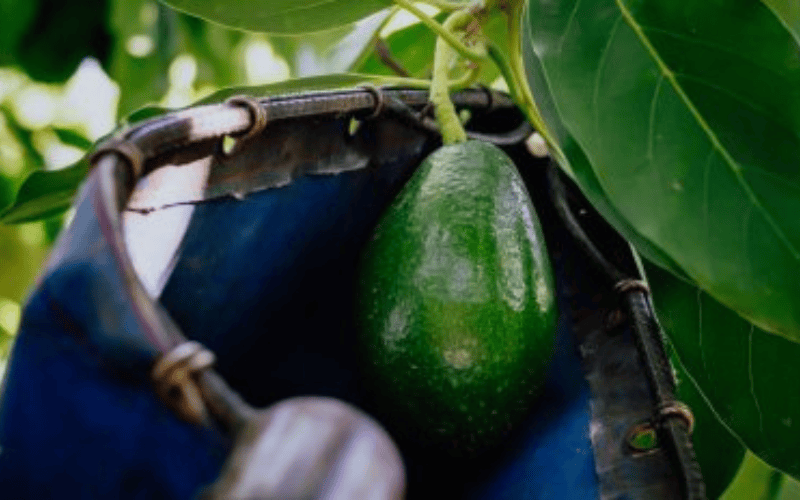
Harvesting avocados requires proper timing and gentle handling to ensure the fruits are ripe and undamaged. Here's a step-by-step guide on how to harvest avocados:
Determining the Right Time
Before harvesting avocados, it's crucial to identify the correct timing based on the variety you are growing. Different avocado varieties have distinct maturation periods, so research or consult local experts to determine the approximate harvest time. Generally, ripe avocados have reached their full size and display the appropriate skin colour, such as green or purple-black.
Gentle and Careful Harvesting
When the avocados are ready for harvest, it's essential to handle them with care to avoid bruising or damage. Use a picking pole or pruning shears with a basket attachment to reach higher fruits. Gently twist the avocado to detach it from the stem, or use pruning shears to cut the stem close to the fruit without harming the branch. Avoid dropping the avocados from the tree, as this can lead to unnecessary bruising. Lower them gently into a container or basket to preserve their quality.
Practicing Incremental Harvesting
Avocado trees often produce fruits at different stages of maturity. Instead of waiting for all the avocados to be ready simultaneously, it's better to harvest incrementally as they ripen. This approach extends the harvesting period and reduces the risk of fruit spoilage.
Once harvested, handle the avocados with care and transport them in shallow containers to minimise stacking and pressure on the fruits. Avocados will continue to ripen off the tree. If you want to delay ripening, store them in a cool place. To accelerate ripening, place the avocados in a paper bag with a banana or apple, as they release ethylene gas—a natural ripening agent.
8 Nutritional Benefits of Avocados
Avocados are not only delicious but also packed with essential nutrients, making them a valuable addition to a healthy diet. Here are some of the nutritional benefits of avocados:
1. Healthy Fats
Avocados are rich in monounsaturated fats, particularly oleic acid. These heart-healthy fats can help lower bad cholesterol levels (LDL) while increasing good cholesterol levels (HDL), promoting cardiovascular health. The fats in avocados also aid in the absorption of fat-soluble vitamins like A, D, E, and K.
2. Dietary Fibre
Avocados are an excellent source of dietary fibre, which is essential for digestive health, as it helps maintain regular bowel movements and promotes a healthy gut. Additionally, fibre helps control blood sugar levels and contributes to a feeling of fullness, which may help with weight management.
3. Rich in Vitamins
Avocados are loaded with various vitamins, including:
- Vitamin K: Important for blood clotting and bone health.
- Vitamin C: An antioxidant that supports the immune system and skin health.
- Vitamin E: Another antioxidant that helps protect cells from damage.
- B Vitamins: Including B5, B6, and folate, which are essential for energy production and cell metabolism.
4. Abundant in Minerals
Avocados provide essential minerals, such as potassium, magnesium, and copper. Potassium is crucial for maintaining proper heart function, muscle contractions, and fluid balance. Magnesium supports nerve function and bone health, while copper aids in iron absorption and collagen formation.
5. Antioxidant Properties
Avocados contain various antioxidants, including carotenoids (like lutein and zeaxanthin) and tocopherols. These antioxidants help neutralise free radicals, reducing oxidative stress and inflammation in the body, potentially lowering the risk of chronic diseases.
6. Supports Eye Health
The carotenoids lutein and zeaxanthin found in avocados are essential for eye health. They are associated with a reduced risk of age-related macular degeneration and cataracts, two common eye conditions.
7. Weight Management
Despite being calorie-dense, studies suggest that including avocados in a balanced diet may aid in weight management due to their high fibre and healthy fat content, which can increase satiety and reduce overeating.
8. Improves Nutrient Absorption
Adding avocados to meals can enhance the absorption of fat-soluble nutrients from other foods, such as vitamins A, D, E, and K, as well as certain antioxidants.
It's important to note that while avocados offer numerous nutritional benefits, they are calorie-dense. Moderation is key when incorporating them into your diet, especially if you're watching your calorie intake. Including avocados as part of a well-rounded diet can provide an array of nutrients and contribute to overall health and well-being.
Common Avocado Tree Problems
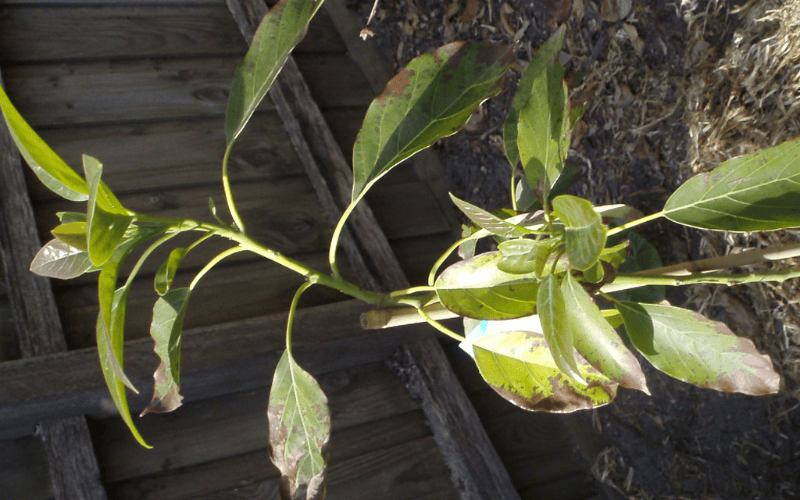
Stepping into the world of avocado tree cultivation, it's crucial to be aware of potential hurdles. Let's unpack some common avocado tree problems you might encounter on your gardening journey:
Battling Root Rot: The Watering Dilemma
Like any garden venture, growing avocado trees can come with its share of challenges. One of the most common issues is root rot, particularly in plants that have been overwatered. Signs of root rot can be subtle, so you need a keen eye. Watch for leaves turning a pale yellow or wilting.
Slowed growth, or a sudden halt in new leaves and branches appearing, can also be a telltale sign. Fruit may appear, but significantly smaller in size than what you'd expect. Root rot is preventable, and being cautious about your watering regime is the key. Avocado trees do enjoy a drink, but they don't like having 'wet feet.' Ensure the soil drains well and allow it to dry out a bit between watering sessions to keep root rot at bay.
Fending Off Fungal Foes: Maintaining Space and Sunlight
Another potential challenge can be fungal diseases, such as powdery mildew, scab, and anthracnose. These unwelcome guests thrive in high humidity and can pose a problem if your avocado trees aren't given enough space. An overcrowded garden not only limits sunlight but also reduces air circulation, creating a damp, shady haven for fungi.
To combat this, make sure your avocado trees have ample room to stretch their branches. Regular pruning of surrounding trees to increase sunlight can also help keep fungal diseases under control.
Deciphering Avocado's Fruiting Fancies: Embracing the Cycle
Lastly, don't be disheartened if your avocado tree is a bit of a sporadic fruit-bearer, especially in its early years. Many varieties have a tendency to fruit lightly one season, then heavily the next. This alternate bearing can be due to a number of factors, including weather conditions and the tree's own biennial rhythm.
Are you planning a garden redesign or in need of some landscaping advice? Our guide on how to find the best landscaper in Australia is a great resource. These professionals provide everything from design inspiration to full-service landscaping, helping you transform your outdoor space into a beautiful garden masterpiece.
🪴Need Assistance With Gardening?
Whether you're a seasoned green thumb or just starting out in gardening, there's always more to learn. Immerse yourself in our guide to finding the perfect gardener in Australia. These top-rated professionals offer a variety of services, from plant selection to garden maintenance, ensuring your garden remains vibrant and healthy.
🌲Seeking Help With Lawn Care?
Maintaining a beautiful lawn can be a significant undertaking. If you're in need of expert assistance, look no further than our carefully curated guide on choosing the right lawn mowing service in Australia. These experts can help keep your outdoor spaces at their greenest and cleanest best with their lawn mowing and care expertise.
Frequently Asked Questions (FAQs)
Here are some frequently asked questions on growing and caring for the Avocado tree.
What are the stages of avocado seed growth?
The avocado seed goes through several stages during its growth process. Initially, after planting the seed, it enters the germination stage, where the outer seed coat softens, and a root emerges, followed by the growth of a shoot.
Next, the seedling stage begins, and the shoot develops leaves, stems, and branches, eventually growing into a small avocado tree. As the tree continues to mature, it enters the flowering stage, producing blossoms that can lead to fruit development.
Finally, in the fruiting stage, the avocado tree bears fruit, which will grow and ripen over time, ready for harvesting and consumption. The entire growth process from seed to fruiting tree can take several years, with different varieties having varying timelines.
Do you have to peel avocado seeds before planting?
No, you do not need to peel avocado seeds before planting them. To start growing an avocado plant from a seed, remove the seed carefully from the ripe avocado fruit. Wash off any remaining flesh, and then use toothpicks to suspend the seed over a glass of water or place it partially submerged in a container with the bottom end in water.
The seed will sprout roots and a shoot. Once the plant has grown several inches, it can be transplanted into a pot with soil. Peeling the seed is unnecessary and may damage the seed or hinder germination, so it is best to leave it intact when starting your avocado plant.
How long do you dry avocado seeds before planting?
Before planting an avocado seed, it's essential to let it dry out for approximately 2 to 3 days. After removing the seed from the fruit, gently wash off any excess flesh and allow it to air-dry in a cool, shaded area. Drying the seed helps prevent potential fungal growth and improves its chances of successful germination when planted. Once the seed is dried, it can be planted in well-draining soil, and with proper care, it will sprout into an avocado tree.
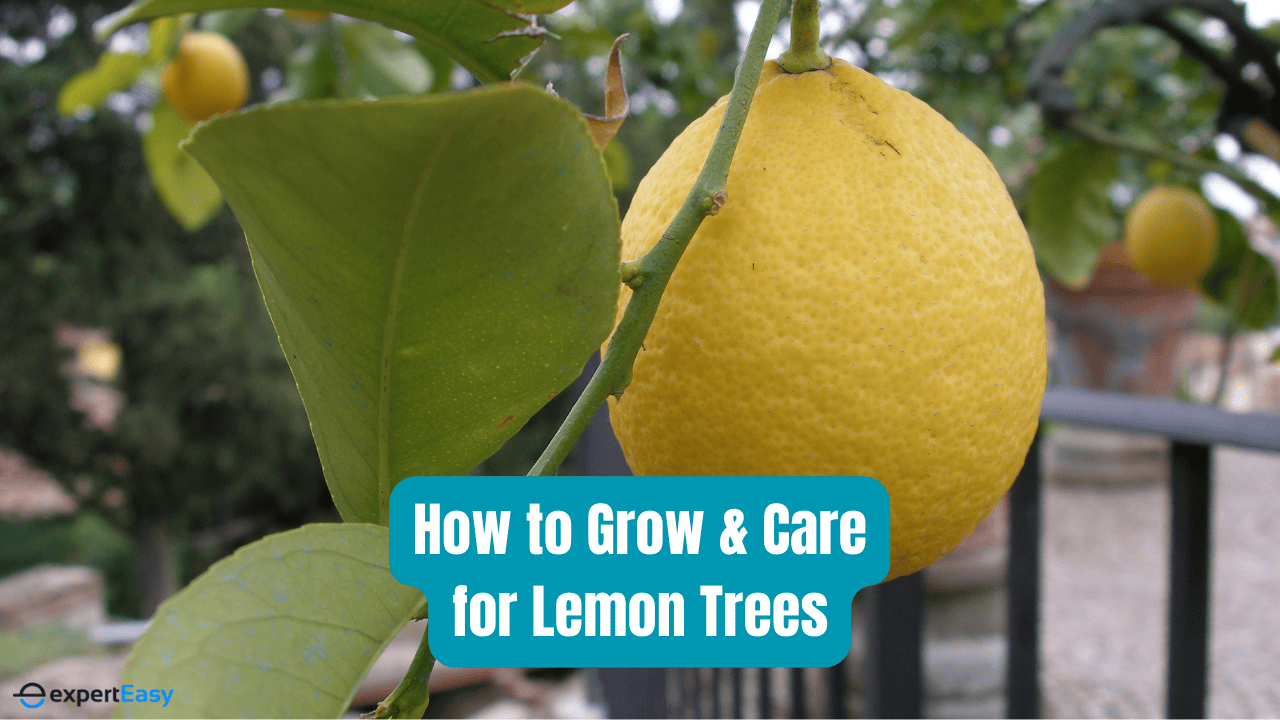
Wrapping Up The Avocado Adventure
Growing your very own avocado tree can be a rewarding journey layered with moments of patience, anticipation, and pure joy. From the first crack of a germinating seed to the sight of your maiden avocado fruit hanging proudly from the branches, each stage offers its unique thrill.
And while the road may be sprinkled with challenges - be it fending off root rot or deciphering the plant's fruiting rhythm - each hurdle crossed will only strengthen your bond with your leafy friend. After all, isn't overcoming obstacles part of every true adventure?
So, brace yourself, green thumbs at the ready, and set sail. There's no greater satisfaction than tasting the fruits of your labour, especially when it's a freshly plucked, home-grown avocado.

